How NAV Uses Content as Building Blocks
With a new content strategy for NAV.no, there has been great changes for the content and how the website is put together.
Written by Vegard Ottervig on
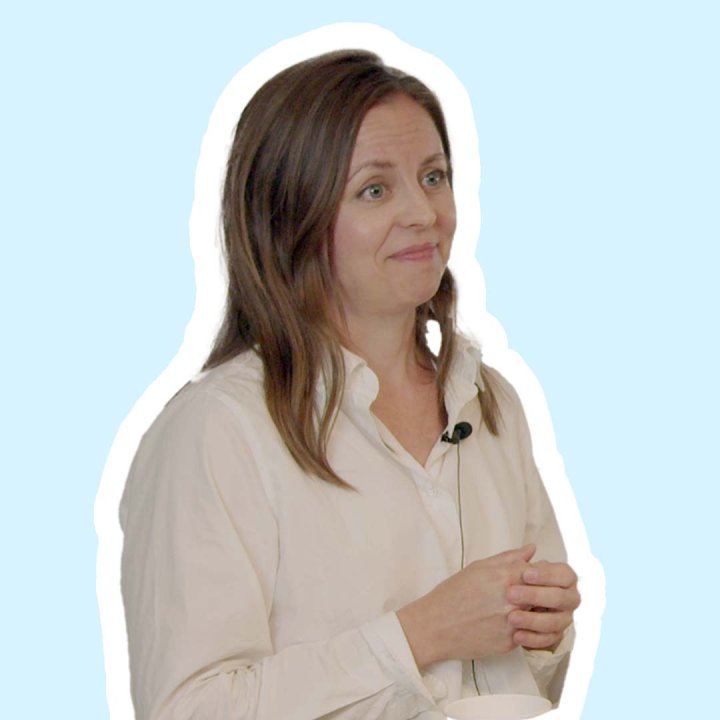
With a new content strategy for NAV.no, there has been great changes for the content and how the website is put together.
Written by Vegard Ottervig on
Tuva Sverdstad is a Product Manager for Team NAV.no, who works on system, structure, navigation, and templates for NAV—the Norwegian Labour and Welfare Administration. The team consists of 15 developers, content editors, and designers. Recently, Tuva had a talk at Enonic's offices about how NAV uses content as building blocks.
See the talk here (in Norwegian):
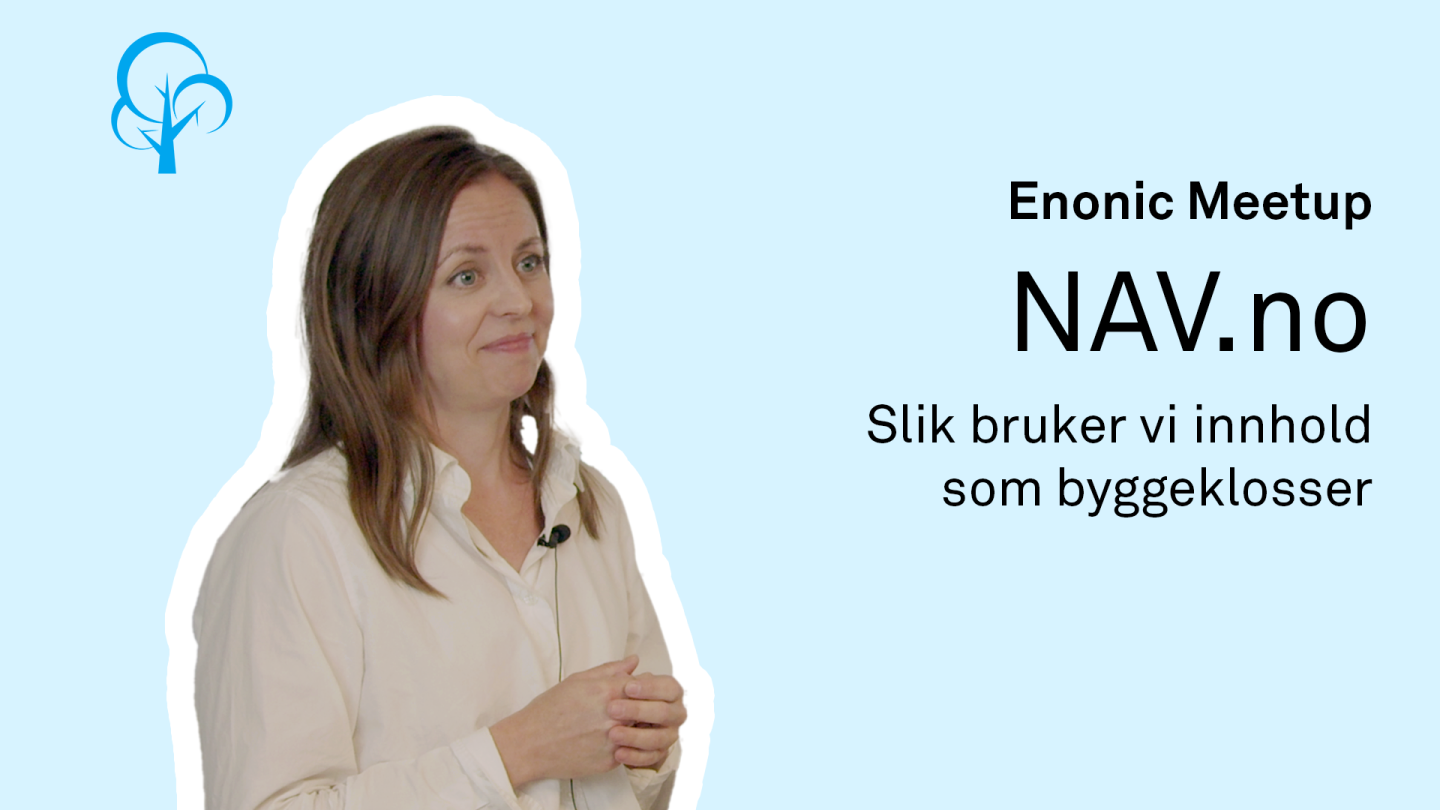
NAV.no has about 230,000 daily visitors, often as their first and only contact with NAV, especially for essential services like parental benefits. Some users are in crisis situations, making it crucial for the site to function optimally.
Two years ago, NAV's front page was overloaded with information, requiring navigation through complex benefit names. Users described it as confusing and inefficient. NAV offers 164 different benefits and services, leading to 33,000 pages by 2021 due to a lack of a content strategy.
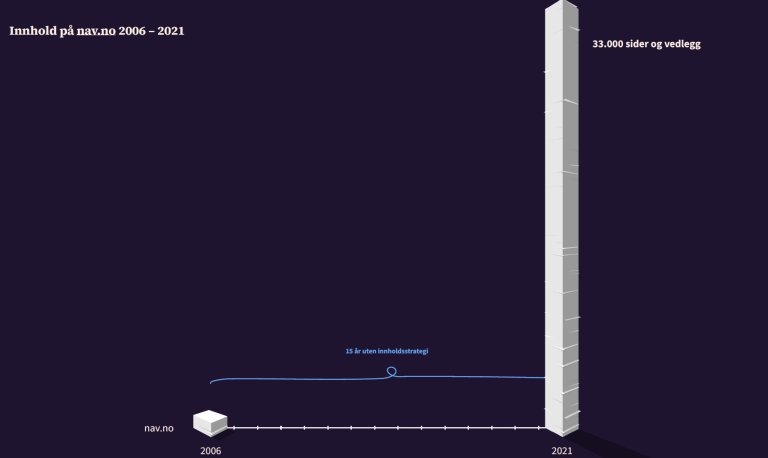
Information was fragmented across multiple pages, complicating the user's experience. This structure reflected internal organization and legal frameworks, not user needs, resulting in a complex hierarchy that confused users. One user described it as a labyrinth.
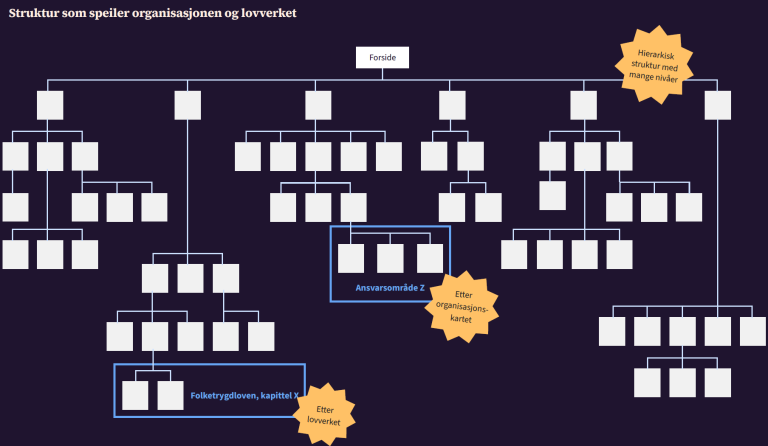
With diverse offerings and an enormous content volume, NAV.no had to meet the needs of all Norwegians, including those in crisis. The site's complexity and significance demanded a change to better serve the population.
Team Nav.no established a content strategy, available on aksel.nav.no, which is an interdisciplinary and open toolbox. The strategy consists of ten commandments, with commandment number nine being particularly important: "We use content as building blocks."
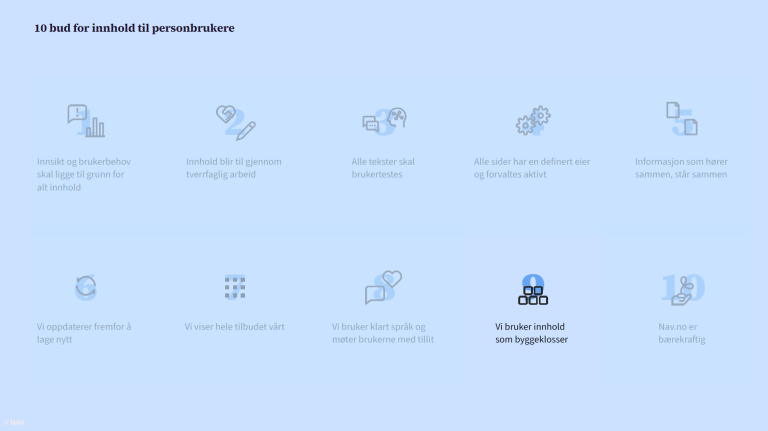
NAV has several content types, such as products (benefits, services, or aids) and situations (e.g., "looking for a job" or "having a baby"). These content types have different user needs and characteristics. Previously, information was squeezed into a few templates, regardless of purpose. Now, each content type has its own template, tailored to user tasks. This provides a consistent presentation of products, whether it is retirement pension, parental benefits, or wheelchairs.
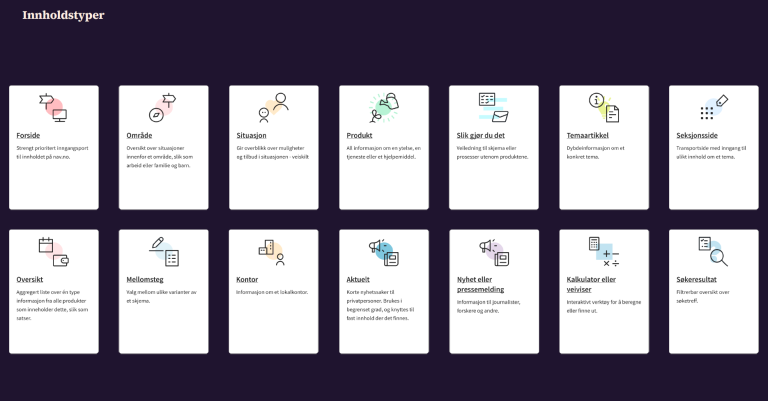
In 2021, work began to clean up the content on NAV.no. The goal was to reduce the number of pages and present the content neatly in new templates. Since then, the number of pages for personal users has been reduced by almost a thousand. A significant step has been to consolidate product information on a single page, which reduces cognitive load and increases the chances that users find the information they need.
NAV.no has shifted from a hierarchical structure to a more flexible structure where content is used as building blocks in navigation. Products can appear in multiple places, depending on the situation. For example, "extended child benefit" can be found under several situations and in overviews of financial support and services. This non-linear structure allows users to approach content in multiple ways.
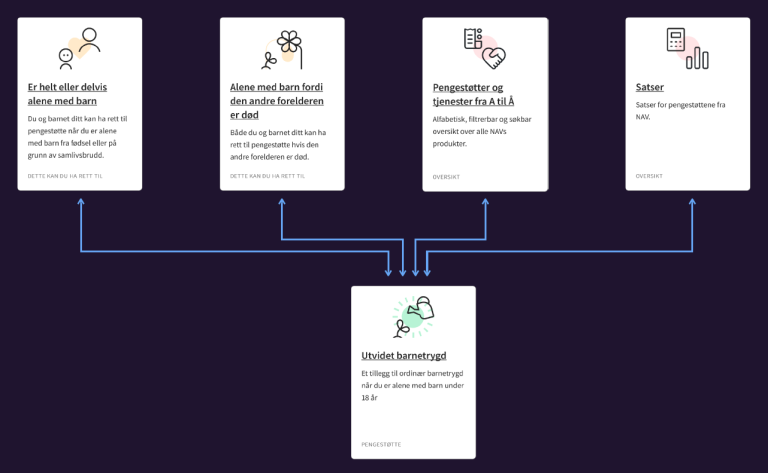
Previously, a search for "child support" could yield 30 different results on NAV.no. Now, the information is consolidated on one page, making it easier to find. Each product is accompanied by a short introduction and a label to compensate for the often cryptic names. Content types also have fixed and flexible elements, documented in Aksel, and editors have access to e-learning for details.
NAV.no also uses smaller content pieces as building blocks. For example, on the product page for cash benefit, rates are displayed, and the same component appears on the rates overview. Search buttons and submission buttons are also standardized and appear on multiple relevant pages.
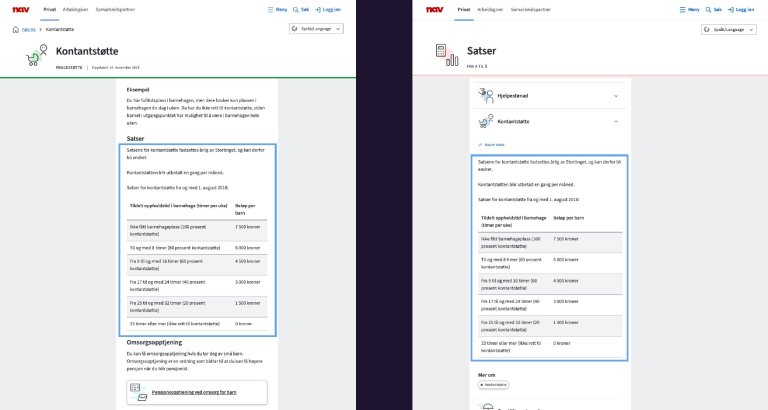
Maintenance of information is done centrally. For example, processing times and amounts based on the National Insurance base amount are updated automatically. Previously, users had to calculate amounts based on the base amount themselves, but now the amounts are displayed directly, making the information more comprehensible.
Metadata is used actively. Each product has metadata that is used in navigation and presentation. For example, the product card for "child care benefit" includes title, introduction, category, and pictograms. These elements are displayed both on the product card and within the product page itself. This makes it easy for users to navigate to relevant information.

Additionally, categories are used as filters in the overviews, allowing users to filter products within various types and areas.
The product page is the oldest template NAV have following the introduction of the content strategy. Although it has been adjusted along the way, it was time for a thorough review this fall. NAV have gathered user insights for three years and expanded from nine to 192 product pages. Based on this insight, NAV have been working since August to improve the product page template, focusing on content and structure.
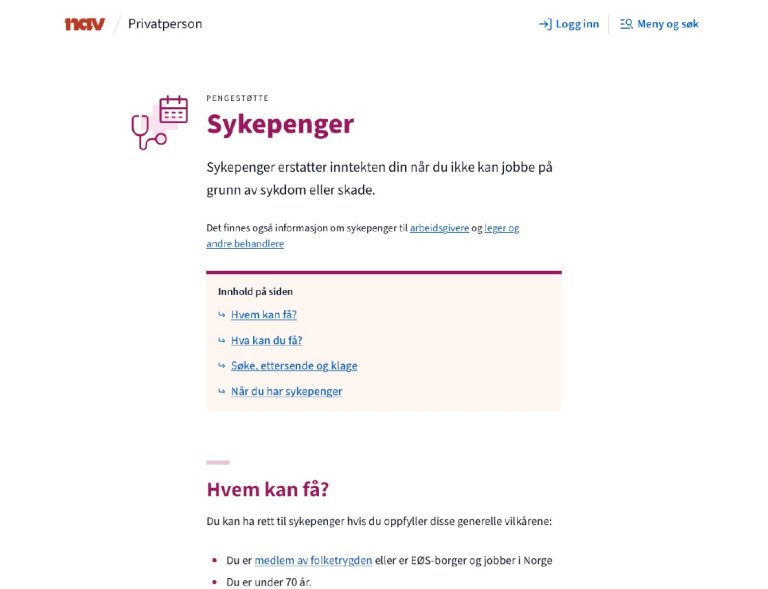
Previously, the content menu for sick leave benefits could be so long that it fell off the page. Now, the products have four fixed main chapters, consistent across products, with flexible subchapters to accommodate various needs. This provides a balance between uniformity and flexibility.
Soon, a new template for all article pages will be launched. At the same time, they have cleaned up all the content. The process is documented on aksel.nav.no in a blog series with six episodes, the latest of which was published recently.
Question: How do you keep track on the back-end when you don't have a strict hierarchy on pages? How do you find your way around?
Answer: NAV have a folder structure in Enonic, but they don't expose it. This gives users a simple URL, while they internally maintain a good overview with folders and levels.
Question: I think you mentioned you had 30,000 pages. How many do you have now?
Answer: NAV have more pages in total, but the content for personal users makes up only three percent of NAV.no. They have a lot of statistical content that continuously grows with new statistics. Nevertheless, they have halved the user-directed content.
Get some more insights: